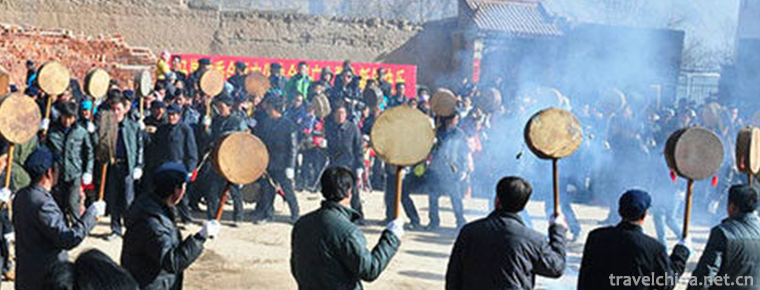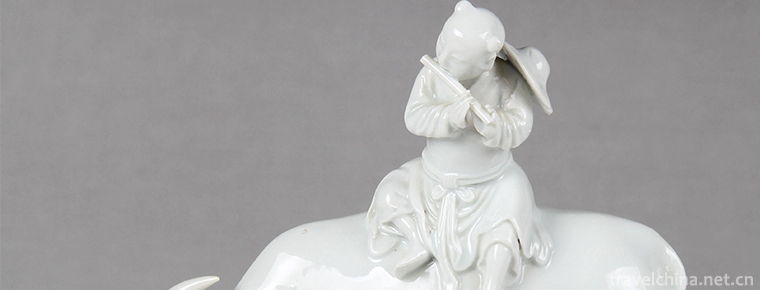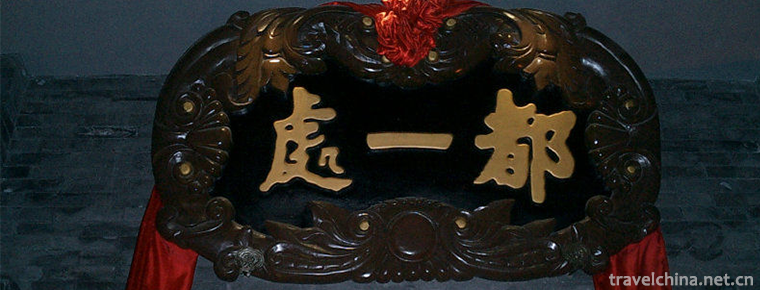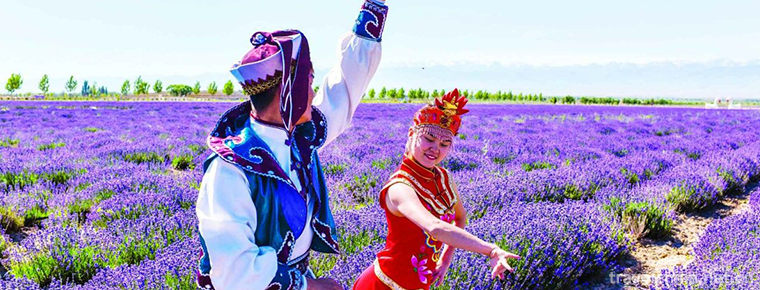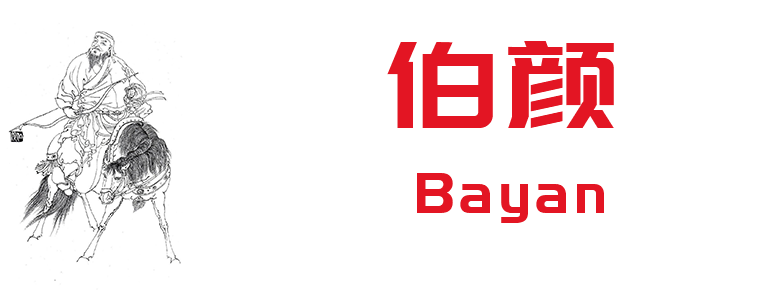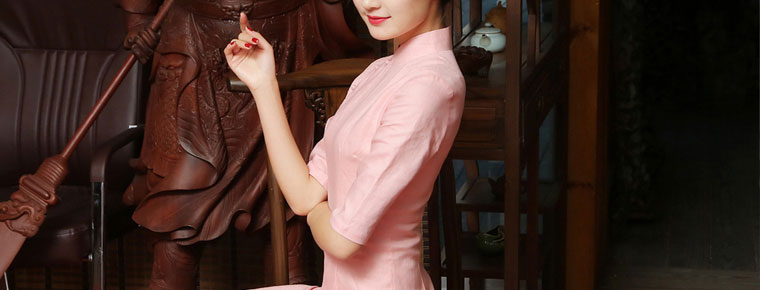Langyatai Scenic Area
Langyatai Scenic Area
Langyatai Scenic Spot belongs to Qingdao Langyatai Provincial Tourism Resort (established in December 1995 with the approval of Shandong Provincial People's Government with a planned area of 9.8 square kilometers). In 1982, the State Council announced that Langyatai was listed in the first batch of national key scenic spots. In 1993, the Qingdao Municipal People's Government announced Langyatai as a scenic and tourist area of Qingdao Langyatai. In 2010, the National Tourism Administration assessed Langyatai as an AAAA-level scenic spot. In 2013, Langyatai was recognized as a national key cultural relic protection unit.
geographical position
edit
Langyatai is located 26 kilometers southwest of Huangdao District, Qingdao, Shandong Province (formerly Jiaonan City). It has four distinct seasons, humid climate, exquisite natural scenery and profound history and culture. It is a seaside resort for summer vacation, ancient exploration and sightseeing.
Development history
Langyatai was built by ramming earth on Langyashan Mountain, which was popular with the ancients more than 2,000 years ago. In the Annotation of the Book of Water, Duo Daoyuan described Langyatai as "isolated and prominent, out of the mountains, next Tuesday for more than ten miles, near the sea." His "platform base is three stories, three feet high, the superiors are open, more than 200 steps, five miles high". At present, Langyatai can still be seen to be divided into three levels, step by step. The altitude is 183.4 meters, the circumference of the platform under the mountain is 7.5 kilometers, and the circumference of the flat platform is 130 meters. Landscape of Langyatai Scenic Spot includes the Longwan under Langyatai and the coastal scenic belt around the platform, as well as the historical sites and natural scenery on the island of Zhaitang in front of the platform.
In the early Zhou Dynasty, Jiang Taigong became eight gods in Qi Dynasty. Among them, the Temple of Four Seasons stood on Mount Langya. Many emperors in past dynasties came here to worship the Four Seasons Lord. Goujian, the king of Yue, was in Langya Mountain to observe the feudal princes of the Taiwanese Association. Qin Shihuang landed in Langya three times and lived for several months. He moved 30,000 people from the mainland to build Langya Terrace and carve stone chronicles. Langyatai is also the place where Xu Fu, a scholar of Qin Dynasty, led thousands of boys and girls to sail east to Japan. It is also a place where scholars and scholars visit ancient times to explore their dreams. Therefore, Langyatai is like a thick history book, which is an important cohesion point of Langyatai culture. Since 1994, the Xufu Society of China has held many national and international symposiums and visits to Xufu sites. Jiaonan Municipal People's Government holds annual celebrations here to commemorate Xu Fudong's journey to Japan.
Since its development and construction in 1993, the scenic spots have successively developed and constructed such scenic spots as Xufudian, Yijiaogou, Yunladder, Royal Road, Wangyaolou, Qinshihuang sending Xu Fudong to the sea to seek immortal sculptures, Qin Langya carving stone, Xu Fu Dongdu sailing departure, Guanlongge Pavilion, Whale Hall, Langya Cultural Exhibition Hall, Qinbian, Guanlongtai, Guanlong Pavilion and Longwan Seawater Bath, which have provided catering, accommodation, accommodation for tourists. Entertainment and shopping services have the palace style of the Qin Dynasty visitor center and Xufu Street to show the style of the Qin Dynasty city. In Wangjiataihou Village and Taixitou Village along the Bank of Longwan, fishermen's banquet folk-custom tours were carried out. Langyatai Scenic Spot, with perfect service and beautiful tourist environment, is a famous scenic spot at home and abroad, which combines humanistic and natural landscapes with distinctive features.
Main attractions
Langyatai, with its crown leading mountains and its elevated sky, clouds and sea waves, echoes the sea islands. Its natural scenery is magnificent and magnificent, and the spectacular scenery between the heavens, the earth, the mountains and the sea appears repeatedly, which makes tourists at home and abroad amazed.
Exhibition Center
Langyatai Cultural Exhibition Hall is located on the hillside east of the west gate of Langyatai Scenic Spot, with black tile red pillars, overlapping eaves, simple and unadorned shape, dignified ancient meaning, which is known as the architectural style of Qin and Han Dynasties at a glance. In front of the exhibition hall stands a bronze statue of the First Emperor of Qin Dynasty, which shows the image of the First Emperor ascending to Langyatai to enjoy the wind and lead people to the history and culture of Langyatai as soon as they enter the scenic spot. The exhibition hall is composed of preface hall, main exhibition hall and corridor. The preface hall exhibits the "Langya Platform", the model of the four-hour ancestral hall, the chronology of major events in the ancient Langya area and the map of historical changes in Langya. On the first floor of the main exhibition hall are the statues of 12 important historical figures who visited Langyatai from the Spring and Autumn Period to the Han Dynasty and murals and maps reflecting their activities in Langyatai. On the second floor are the cultural relics and social relics unearthed from Langyatai. On the wall of the corridor are inscriptions of poetry, prose and inscriptions by celebrities of all dynasties chanting Langya scenery.
Stomping groove
On the east side of the Langyatai Cultural Exhibition Hall, between Langyatai and Zhenggaoshan Mountain, there is a green mountain gully - Pajiaogou. Legend has it that the first emperor of Qin built Langyatai, forced labor, the people suffered terribly, people complained about the anger of nature. Qin Shihuang's punishment in the daytime drove the people to build a platform to rise one floor, and the mountain tops on the west side of Taiwanese were also growing one section high overnight. In this way, we keep building platforms on this side, and the mountains on that side keep growing high. Langyatai is always higher than Xishan. Emperor Qin Shihuang was so angry that he stamped his feet on the West mountain, which stopped growing. The place where he stamped fell into a ditch, which was called "stamping ditch".
The rivers at the bottom of the gully are bubbling and the wild roses at the edge of the stream are densely clustered. There are tall chestnut trees growing everywhere in the ditch. In summer, the trees are lush and the shade is cool. In autumn, when the fruit is ripe and falls to the ground, visitors can pick up chestnuts on the roadside, which gives people a surprise.
Xu Fu Dian
At the northern end of Tajiaogou, a group of Qin Dynasty style building communities were built on the hills. This is Xufudian built in memory of Xu Fu, the ancestor who initiated friendly exchanges between the Chinese and Japanese people. The building area is 871 square meters, divided into front and rear halls and East and West halls. In the middle of the front hall is a statue of Xu Fu. On the walls are large-scale fine brushwork describing Xu Fu's life and his journey to Japan. There are also works on Xu Fu's research at home and abroad. The rear hall and the two luxuries exhibit cultural relics and celebrities'paintings and calligraphy.
Xu Fu is a pioneer of friendly exchanges between the Chinese, Japanese and Korean people, and is highly respected by the Chinese, Japanese and Korean people. Societies from Japan and South Korea come to visit Xufu's relics and pay homage to them.
Aerial ladder
Behind Xufu Hall, on the connecting line between Langyatai and Zhenggaoshan, there is a granite terrace built along the hillside, just like the white silk ribbon floating down from the sky. People call it the cloud ladder. According to the records, this was one of the three Royal Roads of Qin Shihuang's ascent to Langyatai. In 1994, it was built at the original site of the Royal Road, 152 meters high and 2.8 meters wide, with 336 steps, including four platforms. On both sides of the ladder, trees, shrubs, vines and other vegetation are all over the hillside. They are lush and full of vitality.
Guan Long Ge
Climbing to the top of the ladder, there is a plain between Langyatai and Zhenggaoshan. The antique Pavilion on the north side of the plain is called Guanlong Pavilion. The main cabinet has two floors, with galleries on both sides. In front of the cabinet is a venue for performing and watching literary and artistic programs. Because of the special meteorological conditions and geographical environment, the clouds over Langyatai often change into dragon shapes, and the dragon-flying dragon dance appears. Every time the southeast wind blows, the waves in Longwan under Langyatai are not rolling and rolling, but running in a "dragon" shape. Every wave has its head high, its beard fluttering, its body strong and its tail stretching. Throughout Longwan, the Dragon disappears, the Dragon leaps and bounds, the Dragon sings and sings, forming the scene of thousands of silver dragon gatherings. The magnificent momentum of thousands of silver dragons gathering in Longwan can be more felt by watching the spectacle of Langyatailong in Guanlongge Pavilion. The projection Hall of Guanlong Pavilion also broadcasts the TV documentary "Langyatai Guanlong".
Terracotta Warriors and Horses Pavilion
The Qin Terracotta Warriors and Horses Pavilion is located in a cave on the east side of Guanlong Pavilion. It is divided into three exhibition halls to show three battle phalanxes of Qin Army. These terracotta warriors and horses are based on the terracotta warriors and horses unearthed near the mausoleum of Qinshihuang in Shaanxi Province. The square arrays are laid out as they are. The array is fantastic, deep and mysterious, powerful and vivid, which demonstrates the military power of Qinshihuang in uniting the world.
Qin Yu Lu
Qin Royal Road is the road that Qin Shihuang walked when he climbed Langyatai. From Guanlong Pavilion eastward along a cobblestone road on the northern slope of Langyatai, more than 200 meters ahead, Qin Royal Road arrives.
The current Royal Road was rebuilt on the old roadbed in 1994. In the middle of the road is a smooth road paved with black square bricks, with granite steps on both sides and stone carved guardrails along the road. The road is 6.8 meters wide and 135 meters high. There are 386 steps with four spacious platforms in the middle. On the eastern side of the third platform, an ancient building site was excavated when the Royal Road was rebuilt. It was built of yellow rock layers, resembling the pyramids of ancient Egypt. On the Royal Road, you can hear the footsteps of the people in front of you are very special, such as stepping in the water, which coincides with Qin Deshuide's saying. Up to the top of Langya Platform, looking around, we can see the peaks and mountains rising and falling at our feet, the sea stretching to the horizon, people are especially close to the sky.
Wang Yue Lou
Wangyue Tower is an ancient pavilion building. On the east side of the top of Langya Platform, there is a bronze statue of Goujian, king of Yue, forged in copper in the pavilion. He is wearing armor and holding a long sword in his waist. He is a heroic figure embracing all over the world. History records show that after Goujian's migration to Dulangya, the King of Yue rose from the observation platform on Mount Langya and built an observation tower on the top of Taidong to climb the building and look south at his home auditorium. Looking over the tower is an excellent place to watch the sunrise at sea.
Rammed Soil Protection Pavilion
On the east side of the top of Langyatai, there are gallery-pavilion buildings with window-like half-wall pavilions in front of the pavilions to protect the straightened soil layer. Each layer of Rammed Soil is about 6 centimeters thick, and the rammed texture is very clear, which confirms the accuracy of the records in Historical Records.
Seagoing for Immortal Sculptures
Qin Shihuang sent Xu Fu to the sea to seek immortal sculptures.
On the top of Langyatai, there are 14 stone statues: Qin Shihuang, Xu Fu, Huhai, Li Si, Zhao Gao and civil and military officials, warriors, maids and servants. The sculptures vividly show the scene of Xu Fu telling Qin Shihuang about his journey to seek immortality at sea during his third tour of Langya in 210 B.C. The overall charm of the work is in harmony with the background of Gutai, Gaotian, the sea and the mountains, and it also sets off each other with great momentum. Group sculptures solidify a legendary historical scene on Langyatai.
Langya carved stone
This is the full text of the inscriptions of the Qin Shihuang Langya and the second imperial edict inscribed in 1994 according to the Records of History. It stands on the hilltop protruding west of the top of Langyatai. The sculpture of the stele is designed and constructed according to the records in the relevant chronicles, using Qingzhou Moqingshi as the Engraved Stone body. The inscription is 4.8 meters high, 0.73 meters wide at the top and 2 meters wide at the bottom. The inscription is written by Xiong Boqi, a famous calligrapher, in small seal script, and is engraved on the east, South and west sides of the middle part of the inscription.
Whale house
Whale Hall is not only an important scenic spot in Langyatai scenic spot, but also a base of popular science education for teenagers. Specimens of whales displayed at the whale museum are from a young whale carcass that surged ashore at a beach on the west side of the whale Museum in 1995. The main body of the whale house has two floors and three lateral floors. On the first floor, whale skin specimens are displayed. On the second level, whale bone specimens are exhibited, along with nearly 200 other species of marine organisms, including Chinese sturgeon, porpoise, dolphin and turtle, which are the first-class protected animals in China and the second-class protected animals in China.
Tingzilan Fortress
Tingzilan Fort was built in Yongzheng Period of Qing Dynasty on the North Bank of Langyagang Port in front of Langyatai. It is one of the three ancient fortresses in Jiaonan city and an important coastal defense military facility in ancient times. The ancient people set up fortresses here, which shows the importance of the ancient military status of Langyatai and Langyagang.
Xufu Dongdu Stone Stele
On the port wharf of Langya Port, there is a stone tablet inscribed with "Xufu Dongdu Initiation Site". According to the Records of History, Xu Fudong sailed to Japan from Langya Port in front of Langyatai. In ancient China, Langya Port has been an important maritime port and Coastal Defense Center for a long time. At present, the port not only has fishing boat wharf and cargo wharf, but also has tourism wharf. Qingdao-Langyatai Maritime Tourist Terminal is right here. Not far from the East and west of the stone tablet at Xufu Dongdu Navigation Station, there are Chaowan ancient shipbuilding site and Zhewanzi ancient shipbuilding site, which local residents say is Xufu's old site for immortals and for building ships in Japan. There Xufu found a kind of strange and ugly sea creature, which is what we now call sea cucumber, now the sea cucumber of Langyalong Bay. In this way, Xu Fu lived on the island for more than 50 years, 90 years, still like a child's face, must be black, all diseases are not, Xu Fudawu, the original "elixir of immortality" here! Because of its earthy color, it is called mud and earthy meat.
Zhai Tang Island
From the port of Langya to the southeast by boat 0.9 kilometers, it arrived at the island of green trees and red tiles. It was named "when the first emperor ascended Langya, his attendants fasted here". Zhaitang Island is 1.6 kilometers north-south, 0.25 kilometers east-west, 5.i8 kilometers circumference of the coastline, covering an area of 0.4 square kilometers. It is divided into South Island and North Island, which are connected by a narrow sand dune. North Island is flat, with more than 300 residents, mainly fishing, the villagers are island fishermen. To the west of the village is a harbour for fishing boats and ferryboats. In the eastern part of the village, the intertidal reefs are rugged. When the tide ebbs, they go there to catch the sea: snails, crabs, oysters... South Island is a hill 69 meters above sea level. It has green pine and onion cages on the hill. There are green shade trails in the woods. The rocks around the island are steep and there are many dangerous sceneries, as well as many good places for rod fishing. It's not interesting to see the black stone caves on the seashore at the southern end of the mountain and the hidden painted reefs exposed by the ebb and flow of the tide. A 11.8-meter-high lighthouse on the top of the mountain was built in the 1950s, giving a historical atmosphere to the islands.
Between Zhaitang Island and Langya Harbour Pier, there is a ferry every half hour. It is very convenient for visitors to enter and leave.
Longwan
In the northeast of Langyatai, there is a vast bay with a water area of 66 square kilometers. The bay mouth is between Dazhushan mouth on the east coast and Zhaitang Island in front of Langyatai, which is Longwan. Looking at Longwan from Langyatai, the wheel hill in the north, the Great Pearl Mountain in the East and Lingshan Island in the East are like a cluster of fairy mountains, and the beach in the West Bank is like the Golden Crescent Moon falling from the sky. Longwan is an axis of ancient Taiwan, Xianshan, Xiandao and crescent-shaped beach inlaid with vast and blue waves of silver scrolls. Whenever the southeast wind reaches level 5 or more, there will be a galloping gathering of Yinlong in Longwan, which is a spectacular sight of the famous Langyatailong.
On the West Bank of Longwan, there is a huge stone with the word "Longwan" engraved on the side facing the land and the word "Shao Qi Long" engraved on the side facing the sea. "Shao Qi Long" was originally a sentence on the stone tablet entitled "Denglang Ya Shu" which was erected by Yan Yuedao of Zhixian County in Zhucheng of Ming Dynasty. After more than 450 years, this monument still exists. This is the literary object that the ancients recorded the wonders of the dragon in Langyatai.
The North Gate of Langyatai Scenic Area is located on the beach of Longwan. It has a large-scale environmental parking lot, which allows visitors to climb Langyatai from the north slope of Longwan. The visitor center with the style of Qin Dynasty palace is on the right side of Beimen. From the tourist center to the parking lot, Xufu Street shows the style of the streets in the Qin Dynasty. On the square of Xufu Street, a 5.8-meter-high statue of Xu Fushi is erected. It shapes the image of Xu Fu's ambition to harness the wind and tread the waves in the distance, which is the pioneer of friendly exchanges between China and Japan.
Longwan bathing beach, beach wide sand fine, 200 meters into the sea depth less than human shoulders, but also away from pollution, the sea is crystal and transparent. If the southeast wind blows, people and the "dragon" have fun together, but also its endless joy! 65
From Longwan Seawater Bath to 100 meters west, it is a folk village of fishermen behind Wangjiatai. There are family hotels in the village, and some projects to attract tourists to participate in fishermen's life and fishery production activities are also carried out.
Guan Longtai
Guanlongtai is a spacious stone platform. On one side of the sea, there stands a stone inscribed with three big characters of "Guanlongtai". The scene of Yinlong galloping in Guanlongwan is very close to the "dragon". It makes people feel that "dragon" can almost jump onto the platform and amuse people. Here is one of the best places to watch the dragon. The platform is connected with a row of stone steps to the south. Standing on the steps, you can hear a very special voice, which is called "Dragon Yin Response Office". After climbing this row of steps, there is a pavilion imitating Qin and Han Dynasty architecture on the left, inscribed on the plaque "Guanlong Pavilion". The Pavilion stands at the top of the cliff and enters the pavilion to watch the Dragon leaping. It has the effect of looking down close to the pavilion. It can not only see vividly, but also appreciate the momentum of the Dragon array.
Qin que
Qin Wan is the gate of Langyatai from the North Road. The imperial plaque is supported by four pillars and a horizontal plaque, which embodies the condensed atmosphere of the Qin Dynasty architecture with simple and simple shape. The inscription of the inscription "Langyatai" was written by Liu Haisu, a famous painter. Not long after entering the gate, he boarded the "Guanlong Bridge" and stood on the bridge. Looking back at the Dragon gathering in Longwan, we can see that the "dragons" passed by the gate, as if they were being inspected. The scene was very solemn and solemn. On the west side of the road in front of the bridge is a black tile house surrounded by green trees and vegetable nurseries. This is a folk house of the Qin Dynasty. Entering the courtyards and indoors of the dwellings is like entering the folk life of the Qin Dynasty more than two thousand years ago.
Hundred birds Garden
Wolong Villa Bird Garden is 300 meters north of Longwan Sea Bath. In accordance with the ecological requirements, the park is constructed with artificial lakes, lotus ponds, sand sliding fields, grass sliding fields and so on. The bamboo trees are shaded, the grass is covered, the flowers blossom in all seasons, and the environment is elegant. Over 70 species of birds live and breed freely on the dense green hills. There are also old dwellings in the area, with straw huts and fire kangs arranged. Fruits and vegetables are produced ecologically in the garden without any pollution. Fish, shrimp and crab are now fished out of the artificial lake. They are absolutely fresh, which is a good place for holidays.
Tourism information
Passenger car
West Coast Bus Terminus opens 501 special line bus for tourism. West Coast Bus Terminus starts at 7:00 and ends at 17:30. Langyatai Transfer Station starts at 6:00 and ends at 17:00, with departure workshop interval of 30 minutes.
Visitors outside the city can reach the scenic spot through Shenhai Expressway, 204 National Highway, Ridong Expressway, Qingdao Binhai Highway and other main trunk roads according to traffic instructions.
Self driving
Starting from the downtown area of Qingdao, take Jiaozhou Bay Submarine Tunnel, Qingdao Sea-Crossing Bridge, Jiaozhou Bay Expressway or ferry to Huangdao or Xuejiadao, and along the coastal highway to Langyatai Scenic Area.




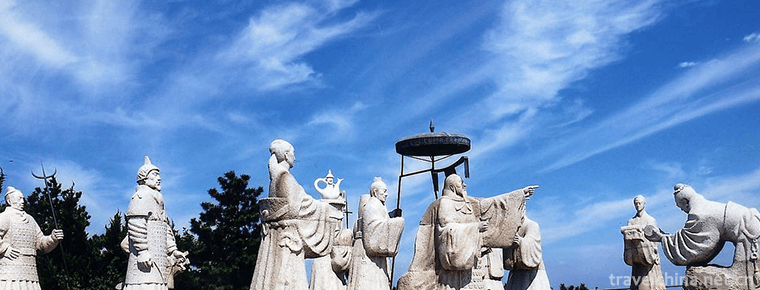
-
Rob Village
Located 35 kilometers southwest of Yuli County, Luobu Village is 85 kilometers south of Korla City. The village covers 72 square kilometers and has more than 20 families.
Views: 187 Time 2019-02-06 -
Badang dance
Badang Dance is a kind of ancient folk dance, which originated from the ancient Qiang people's "Temple Festival" in Dingxi Minxian, southeastern Gansu Province. It is also a sacrificial ritu.
Views: 189 Time 2019-04-02 -
Song of Sichuan river
Chuanjiang chant is a kind of traditional folk singing form that the shipworkers in Chuanjiang valley of Sichuan and Chongqing area lead the singing by the trumpeters for unified movement and rhythm.
Views: 161 Time 2019-04-19 -
Sintering Techniques of Dehua Porcelain
Dehua ceramic firing technology is a traditional handicraft in Dehua, Fujian Province. Dehua ceramic production began in the Neolithic Age, flourished in the Tang and Song Dynasties.
Views: 159 Time 2019-04-26 -
Duyi barley roasting technology
Duyi Maiguan was opened in 1738, the third year of Qianlong in Qing Dynasty. The entrepreneur's surname is Wang, and his native place is Shanxi. For the first time.
Views: 204 Time 2019-04-28 -
Construction Techniques of Li Nationalitys Ship type House
The carrier of the excellent architectural skills of the Li nationality will inevitably fade out of sight in the fierce collision between traditional civilization and modern civilization. Today only a.
Views: 261 Time 2019-05-12 -
Sibo Belem Dance
"Bailun" dance is the generic name of Xibo self-entertainment dance and the first type of Xibo folk dance. It originated from an ancient dance that imitated life and production posture in th.
Views: 128 Time 2019-07-01 -
Bo Yan
Bo Yan (1236 - January 11, 1295), eight neighbouring people in Mongolia. Yuan Dynasty Famous ministers in early years.
Views: 228 Time 2019-09-14 -
Appreciation of short sleeve cheongsam
In the late summer and early autumn, the weather is chilly in the morning and evening. As long as you put on some thin shawls, you can wrap some cloth shawls and tighten them on your chest..
Views: 310 Time 2020-12-11




